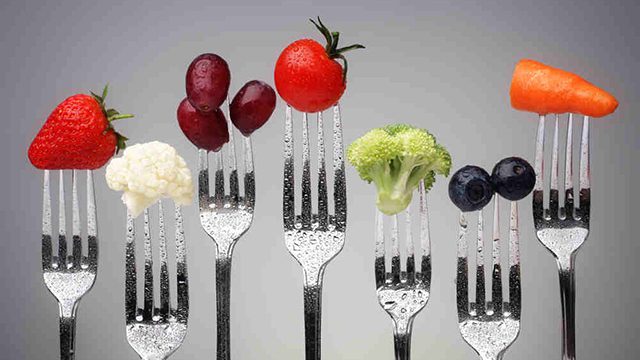SUMMARY
This is AI generated summarization, which may have errors. For context, always refer to the full article.

MANILA, Philippines – With the growing emphasis on healthy living and the fast-paced life in the city, many Filipinos in the Metro are turning to diet delivery programs.
Most diet delivery programs, like Happy Diet Delivery and The Lunchbox Diet, offer 3 meals and two snacks per day. The meals come in separate plastic containers.
Customers may choose their desired package deals, from one-day deliveries to weeklong ones. A week’s supply would typically cost P1000-P3000 ($22 – $65).
Happy Diet and Lunchbox Diet offer daily meal plans that amount to 1,200, 1,500, and 1,800 calories. The latter also offers a 2,000-calorie meal plan.
According to Happy Diet Delivery marketing head PK Kalingking, people started subscribing to their program with weight loss in mind.
“Eventually, our customers’ reason for availing our program became more of maintaining a healthy lifestyle than just purely weight loss,” he said.
Sustainability
Chavinelli Manlagñit, a research analyst at the Food and Nutrition Research Institute (FNRI), said it is good that people are becoming more health conscious, but it is more important to adopt a diet that is sustainable.
A sustainable diet has enough of the 3 macronutrients (protein, fat, carbohydrates) and various micronutrients (vitamins, minerals, and the like) to meet an individual’s energy needs, as measured in calories.
The daily energy requirements varies from person to person, depending on one’s lifestyle.
May Enriquez, a nutrition officer at the National Nutrition Council (NNC), affirmed this. “My energy requirement may be different from others’ energy requirements,” she told Rappler.
An individual’s energy requirement or caloric needs largely depend on his or her Body Mass Index (BMI) and physical activity. The BMI is a person’s weight-to-height ratio, computed by dividing one’s weight in kilograms to the square root of his or her height in meters. (READ: How being overweight can threaten your health)
Physical activity may be categorized as sedentary, light, moderate, or high.
In addition, an individual’s medical history also influences caloric needs.
According to Enriquez, due to these differences, it is important to look at [a diet’s] totality.”
Totality is important
Both Manlagñit and Enriquez emphasized the importance of tracking calories consumed per day, with the minimum ideally at 1,200 calories.
Manlagñit advises people to list down food that they consumed within a day to determine if they ate too little, too much, or just enough.
For this reason, she believes that diet delivery programs help in people’s “portion control.”
Meanwhile, Enriquez stresses that it is far more important that we know the sources of calories we consume. This means that one should be mindful of macronutrient distribution throughout one’s daily meal plan.
“Anything – protein, fat, or carbohydrates – in excess will be no good,” she explained.
It is also for this reason that Enriquez does not recommend juice cleanses, a particular kind of diet program wherein a person only consumes various juices for a certain time, be it a day, 3 days, or a week, for example.
“It might even be better to incorporate the juices into a person’s daily diet,” Enriquez said.
By adding natural juices to a meal, Enriquez explained that it becomes fuller. In this way, more macronutrients are consumed, rather than just carbohydrates, which juices are rich in.
Similarly, diets such as the paleo or all-protein and all-carb diets may not be sustainable, as they each focus on only one macronutrient.
“[Diets like these lead to] quick weight loss, but again they are not long-term,” she said.
Focusing on one macronutrient may also lead to health risks such as kidney complications due to protein-excessive diets.
Commitment is key
Both Manlagñit and Enriquez stressed the importance of a diet’s sustainability.
“Weight loss, along with health, is a commitment,” Enriquez said. “[People need to adopt diets that] they can sustain in the long run, so they should not resort to quick weight loss [diets].”
She added, “People with normal BMI do not really need to lose weight, but [instead] maintain their lifestyle.”
Enriquez further said that people must have clear reasons for weight loss lest they become underweight.
While they do not discourage people from patronizing enterprises such as Happy Diet and Lunchbox Diet, Manlagñit and Enriquez reminded the public that there are other health programs geared at promoting healthy lifestyles.
One such program is the Pinggang Pinoy, the FNRI’s guidelines for healthy and balanced meals. (READ: What a ‘Pinggang Pinoy’ should look like)
The road to a healthy lifestyle need not be bland, according to Enriquez.
“The notion people have of ‘gearing toward a healthy diet’ is [one that is] sad or plain,” she said.
Creativity and improvisation are key to liven up meals while keeping them healthy at the same time. (READ: Creative and healthy ways to cook vegetables)
Manlagñit and Enriquez advised those thinking of embarking on a lifestyle transformation to first consult a nutritionist-dietitian.
“Diets will be personalized based on height and weight. Also, [NDs will help] you safely change your eating plan without compromising taste or nutrition,” Manlagñit said.
She added that healthy living should involve the entire family, as revamping eating habits toward a healthier lifestyle requires motivation from each member of the household. (READ: Preventing obesity at home, community, and school) – Rappler.com
Janelle Paris is a Rappler intern.
*P44=$1
Forks photo via Shutterstock.
Add a comment
How does this make you feel?
There are no comments yet. Add your comment to start the conversation.